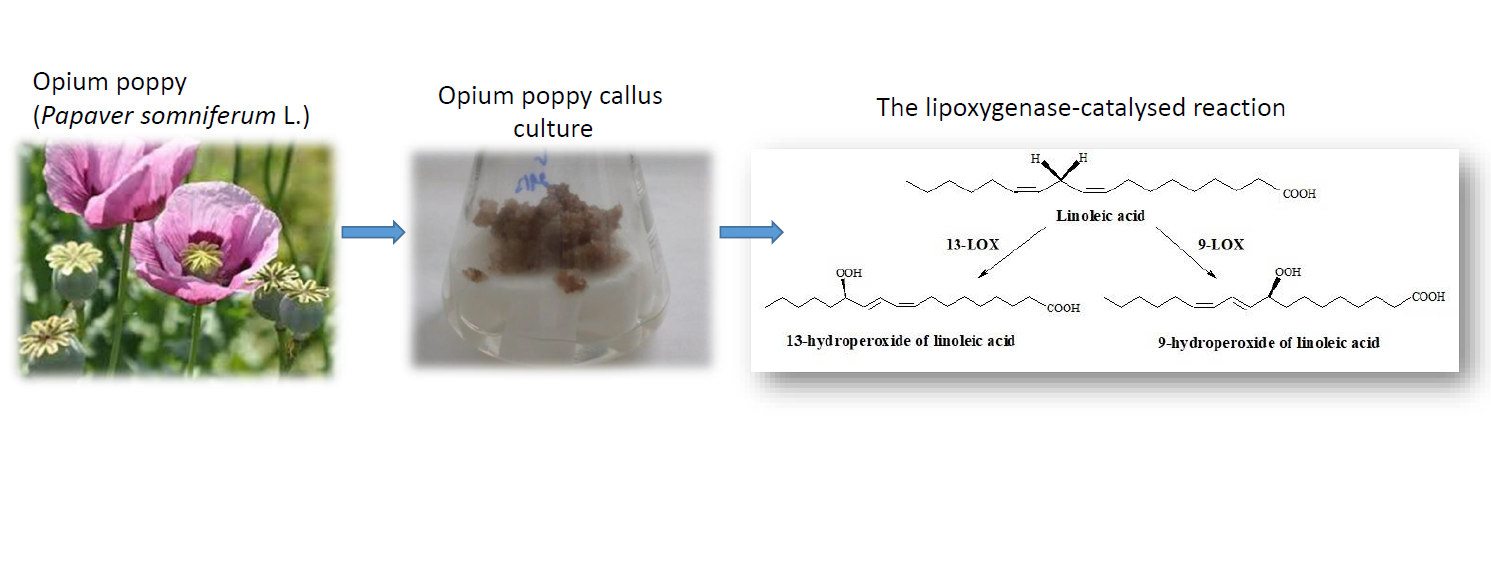Opium poppy (Papaver somniferum L.) is an ancient medicinal plant producing pharmaceutically important benzylisoquinoline alkaloids. In the present work we focused on the study of enzyme lipoxygenase (LOX, EC 1.13.11.12) from opium poppy cultures. LOX is involved in lipid peroxidation and lipoxygenase oxidation products of polyunsaturated fatty acids have a significant role in regulation of growth, development and plant defence responses to biotic or abiotic stress. The purpose of this study was to isolate and characterize LOX enzyme from opium poppy callus cultures. LOX was purified by ammonium sulphate precipitation followed by hydrophobic chromatography using Phenyl-Sepharose CL-4B and hydroxyapatite chromatography using HA Ultrogel sorbent. SDS-PAGE analysis and immunoblotting revealed that LOX from opium poppy cultures was a single monomeric protein showing the relative molecular weight of 83 kDa. To investigate the positional specificity of the LOX reaction, purified LOX was incubated with linoleic acid and the products were analysed by high-performance liquid chromatography. LOX converted linoleic acid primarily to 13-hydroperoxy-(9Z,11E)-octadecadienoic acids (78%) and to a lesser extent to 9-hydroperoxy-(10E,12Z)-octadecadienoic acids (22%). Characterization of LOX from opium poppy cultures provided valuable information in understanding of LOX involvement in regulation of signalling pathways leading to biosynthesis of secondary metabolites with significant biological activity.

